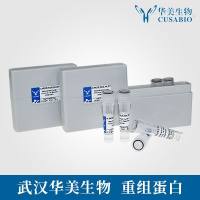Less common disorders:P
互联网
| DISEASE AND CAUSES | PATHOPHYSIOLOGY | SIGNS AND SYMPTOMS |
| Paraphilia | ||
|
Dependence on unusual behaviors or fantasies to achieve sexual excitement. |
|
| Pediculosis | ||
|
Ectoparasite attaches itself to the hair shaft with claws and louse feeds on blood several times daily; resides close to the scalp to maintain its body temperature. Itching may be due to an allergic reaction to louse saliva or irritability. |
|
| Penile cancer | ||
|
Neoplasms may be benign or malignant; latter are usually squamous cell carcinomas. |
|
| Pheochromocytoma | ||
|
Tumor of the chromaffin cells of the adrenal medulla that causes an increased production of catecholamines. |
|
| Pituitary tumor | ||
|
Tumors are usually macroadenomas with self-secreting thyroid-stimulating hormone. |
|
| Plague | ||
|
Acute infection transmitted by a flea bite from an infected rodent. |
|
| Pleurisy | ||
|
Inflammation of the pleura with exudation into the cavity and lung surface. |
|
| Pneumoconioses | ||
|
Chronic and permanent disposition of particles in the lungs causes a tissue reaction, which may be harmless or destructive. |
|
| Polycythemia vera | ||
|
Increased production of RBCs, neutrophils, and platelets inhibits blood flow to microcirculation, resulting in intravascular thrombosis. |
Usually no symptoms in early stages.
In later stages, related to expanded blood volume and system affected:
|
| Polymyositis | ||
|
Damage of skeletal muscle by an inflammatory process dominated by lymphocytic infiltration leads to progressive muscle weakness. |
|
| Porphyrias | ||
|
Biosynthesis of heme is affected by metabolic disorders that causes excessive production and excretion of porphyrins or their precursors. |
|
| Postherpetic neuralgia | ||
|
Varicella virus in ganglia of the posterior nerve roots reactivates, multiplies, and spreads down the sensory nerves to the skin. |
|
| Proctitis | ||
|
Acute or chronic inflammation of the rectal mucosa. |
|
| Pseudogout | ||
|
Calcium pyrophosphate crystals deposit in periarticular joint structures. |
|
| Ptosis | ||
|
Stretching of eyelid skin or aponeurotic tendon causes upper eyelid to droop. Lesion affects innervation of either of two muscles that open the eyelid. |
|
| Pyloric stenosis | ||
|
Pyloric sphincter muscle fibers thicken and become inelastic, leading to a narrowed opening. The extra peristaltic effort that is necessary leads to hypertrophied muscle layers of the stomach. |
|






